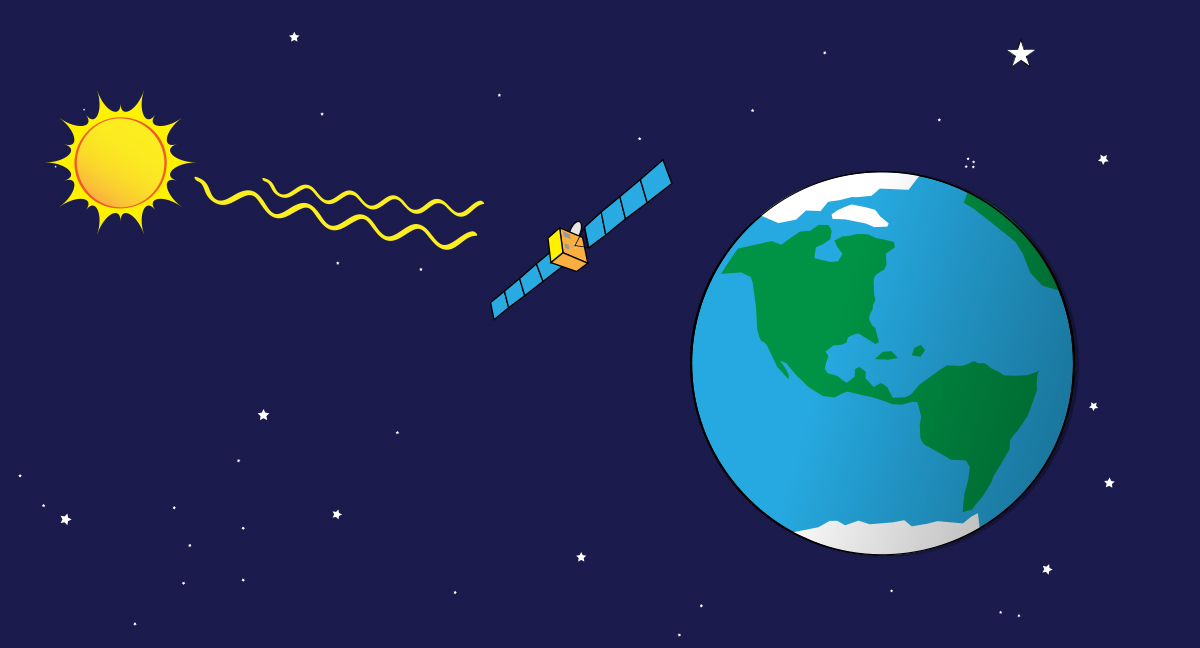For space enthusiasts, knowing what powers a spacecraft is just as important as the mission itself. Without energy, spacecraft wouldn't be able to perform their tasks, take pictures or provide information back to Earth. So, what powers a spacecraft?
There are generally three power sources for spacecraft: solar power, batteries, and unstable atoms. Engineers have to consider several factors when choosing the best power system for a spacecraft. These include where the spacecraft is traveling, what it plans to do there and how long it will need to work.
Solar power is energy from the Sun. Satellites orbiting Earth are close enough to the Sun that they can use solar power. Solar panels in the spacecraft convert the Sun's energy into electricity that powers the spacecraft. The electricity from the solar panels charges a battery in the spacecraft. These batteries can power the spacecraft even when it moves out of direct sunlight.
NASA's Mars Exploration Rovers, Spirit and Opportunity, and Mars’ Phoenix lander all used power from solar panels and so does the InSight lander. Spacecraft traveling far away from the Sun have very large solar panels to get the electricity they need. For example, NASA's Juno spacecraft uses solar power all the way out at Jupiter, where it orbits the planet. Each of Juno’s three solar arrays is 30 feet (9 meters) long!
However, solar power has its limitations. As spacecraft travel farther from the Sun, solar power becomes less efficient. Solar-powered explorers may also be limited by a planet's weather and seasons, and harsh radiation. They might not be able to explore dark, dusty environments, such as caves on the Moon.
Batteries are a common source of power for many space missions. They are particularly useful for missions that are designed to last for a short amount of time. For example, the Huygens probe that landed on Saturn's largest moon Titan was only meant to work for a few hours. A battery provided enough power for the lander to do its job.
Spacecraft batteries are designed to be tough. They need to work in extreme environments in space and on the surfaces of other worlds. The batteries also need to be recharged many times. Over time, NASA scientists have invented ways to improve these batteries. Now they can store more energy in smaller sizes and last longer.
However, batteries have limitations. They have a limited lifespan and eventually run out of power. This means that they are not a suitable power source for long-duration missions. For example, the International Space Station is powered by solar panels, not batteries. Solar panels gather energy from the sun and convert it into electricity. This is a more sustainable and long-lasting option for space missions that require more power.
Another source of power for spacecraft is radioisotope power systems. These systems use the heat generated by the decay of radioactive isotopes to produce electricity. The heat from the unstable atoms is converted into electrical power through a thermoelectric generator. This type of power system is particularly useful for missions that operate in low-light or extreme environments.
Radioisotope systems produce power for a very long time, even in harsh environments. In fact, NASA's two Voyager spacecraft use this type of power. They have traveled farther than any other human-made object and are still sending back information after more than 40 years in space! Radioisotope power systems are also used to power the Curiosity rover on Mars.
One advantage of radioisotope power systems is that they are not affected by the lack of sunlight in deep space or on the surface of other planets. This means that they can provide a consistent and reliable source of power for long-duration missions. However, these systems also have their limitations. Radioisotope power systems are expensive and can be difficult to manufacture. They also require special handling and safety precautions due to the radioactive materials involved.
Tags:
Cosmology

